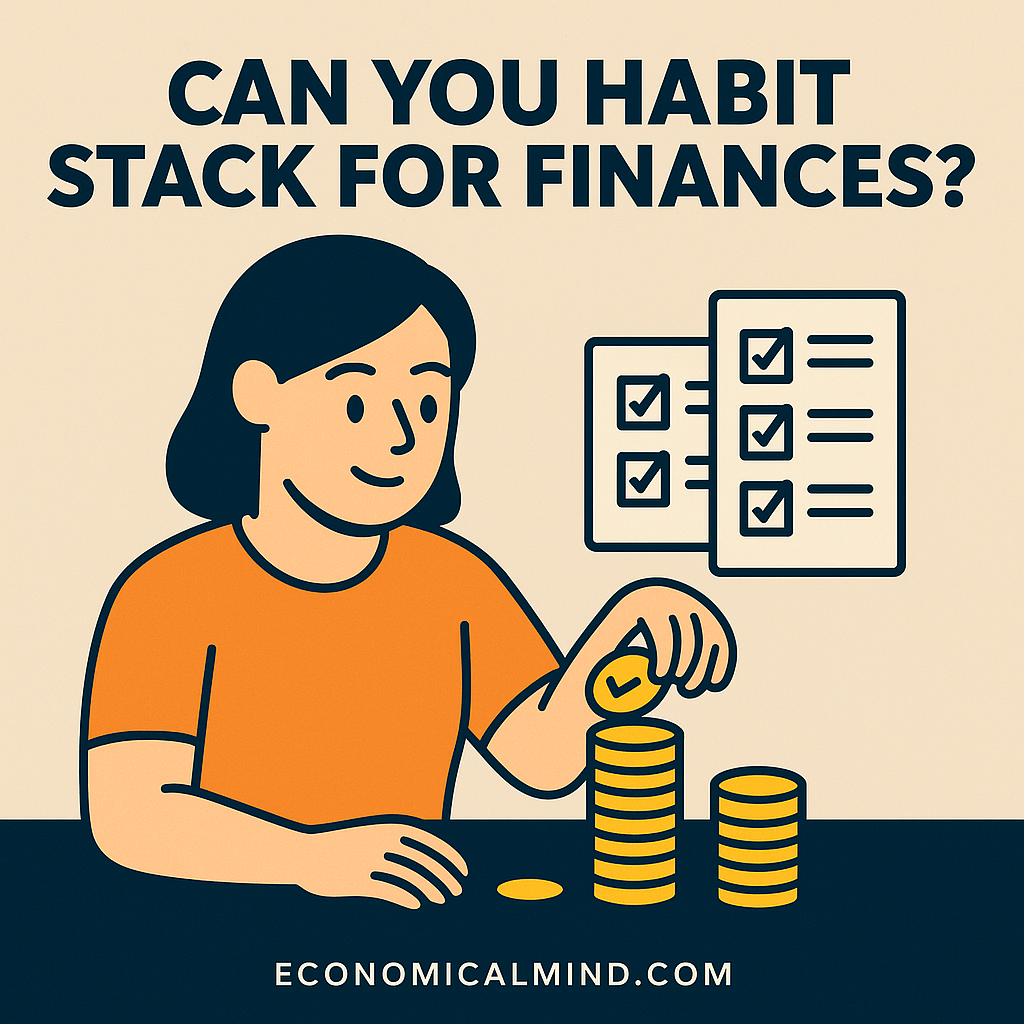
Most people struggle with money not because they lack knowledge — but because they lack consistency. That’s where habit stacking comes in. It’s a simple method for building financial habits that actually stick, by connecting them to routines you already do every day.
What Is Habit Stacking?
Habit stacking is a behavioral strategy popularized by author James Clear in Atomic Habits. The idea is to “stack” a new habit on top of an existing one so it becomes automatic.
Example:
If you already make coffee every morning, you could review your daily spending right after pouring your cup. Over time, this routine becomes second nature.
Applied to finances, habit stacking helps you turn good money behaviors — like saving, tracking expenses, or checking investments — into effortless habits.
Why Habit Stacking Works for Money
Our brains love patterns. When you link a new habit to an existing one, you reduce the mental friction that usually blocks progress. It transforms willpower into automation.
Example:
Instead of saying “I’ll try to save more,” you say, “After I get paid, I’ll transfer $50 to savings.” That clear cue makes action predictable and repeatable.
Pros of Habit Stacking for Finances
1. Builds Momentum Fast
Starting small creates early wins that motivate you to keep going.
Example: Checking your balance after brushing your teeth each night keeps spending awareness high.
2. Reduces Decision Fatigue
You don’t have to think about when or how to manage money — the habit triggers itself.
3. Improves Consistency
Small daily or weekly actions lead to long-term financial growth.
4. Works with Any Lifestyle
You can adapt it to your routines — whether you’re a student, parent, or entrepreneur.
5. Creates Compounding Results
Tiny actions — like weekly budget reviews — add up to massive improvements over time.
Cons of Habit Stacking for Finances
1. Takes Time to Build
Habits form gradually, not overnight.
Fix: Focus on progress, not perfection.
2. Easy to Forget at First
Until it’s established, the new habit may slip your mind.
Fix: Use reminders or visual cues (like sticky notes or phone alerts).
3. Can Feel Too Simple
Small steps may seem trivial — but they matter.
Fix: Trust the process. Tiny financial habits compound just like interest.
4. Requires the Right Anchor Habit
If your base habit is inconsistent, the new one won’t stick.
Fix: Attach financial habits to routines you never skip (like morning coffee or checking email).
5. Progress Isn’t Always Visible
Early results can feel invisible.
Fix: Track small wins — every transfer, budget check, or debt payment counts.
Best Practices for Habit Stacking Your Finances
1. Identify Existing Habits
List routines you already do daily or weekly — like making breakfast, commuting, or checking your phone.
2. Add One Financial Habit at a Time
Start small to build confidence and consistency.
Example: After checking my email, I’ll check my budget app.
3. Use “If–Then” Statements
Write your new habits like a script: “After I [current habit], I will [new money habit].”
4. Make It Easy
Remove barriers — automate transfers or use apps that track spending automatically.
5. Celebrate Small Wins
Reward yourself for sticking with habits, even briefly.
6. Build a Chain of Habits
Once one sticks, add another.
Example:
- After morning coffee → check spending
- After checking spending → update savings tracker
7. Track Your Progress
Use a habit tracker or simple checklist to visualize consistency.
8. Connect It to Purpose
Remind yourself why you’re building these habits — whether it’s buying a home, paying off debt, or retiring early.
9. Involve Your Partner or Family
Shared habits multiply accountability and success.
10. Review and Refine Regularly
As life changes, update your financial routines to match your current goals.
Examples of Financial Habit Stacks
- After brushing your teeth → review yesterday’s expenses.
- After getting paid → transfer 10% to savings.
- After dinner → check investment portfolio once a week.
- After logging into work → pay one bill.
- After your morning coffee → read a personal finance article.
Key Takeaway
Habit stacking turns financial goals into daily actions — automatically. It’s not about willpower; it’s about designing routines that help your money grow on autopilot.
